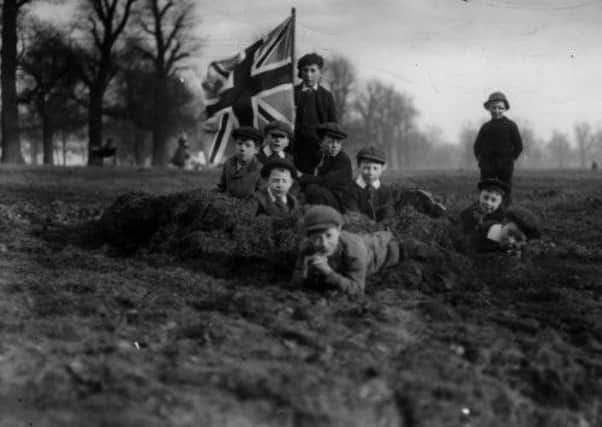Book review: 1913, The World Before the Great War by Charles Emmerson


1913, The World Before the Great War
by Charles Emmerson
Bodley Head, £25
In recent years historians and novelists have devoted volumes of work to examining and recreating that “vanished era”. The standard elegiac image of pre-war Britain has for a century derived from Rupert Brooke’s evocation of a church clock stuck forever in some lazy summer’s mid- afternoon. Into that idyll, into that structured, deferential, static society exploded the guns of August 1914.
Charles Emmerson is having none of that. His debut book takes us from pre-war London to New York, Tehran, Tokyo and a dozen other metropolises before disembarking finally from a steam train at Waterloo Station. It is an epic, sprawling panorama of a book, indended to show the moving world as it was, to bring the past to life in order to clarify the present. It’s a monumentally ambitious aim. The remarkable thing is, he pulls it off.
Advertisement
Hide AdThe year 1913 was, in many ways, similar to 2013. He’s not suggesting that a devastating ground war will lacerate Europe next year, but there are irresistible parallels. In 1913 capitalism had triumphed everywhere, declared an exiled Russian named Vladimir Ilyich Lenin. In 1913 the world was newly linked by extraordinary instant communications such as the telephone. In 1913 a century dominated by a western power was judged by some to be drawing to a close, and the east was reawakening. In 1913 aeroplanes were in the sky and cars were on the roads. Overseas travel was accessible to more civilians than ever before. Modern art and music were provoking widespread incomprehension and hostility. In 1913, says Emmerson, “our world was alive and kicking”. The strength of Emmerson’s centennial study of 1913 lies in its global reach. Certain British historians – Hobsbawm once again comes to mind – are more noted than others for their international grasp. But Emmerson takes us further and deeper. His handling of politics and economics is astute, but 1913 is more a work of social than of academic history.
The trick of social history is to bring an ordinary world back to life, to make dead people walk and talk. Emmerson chooses his vignettes with taste and care. In freshly republican Peking a deposed seven-year-old emperor, the last of the Qing dynasty, approached puberty deep within the medieval confines of the Forbidden City, while outside its walls the country’s new president drove around in a motor car.
In Washington DC Woodrow Wilson, a president dedicated to American isolationism, found himself struggling with political and social upheavals south of the Rio Grande and was happily unaware that in just four short years he would be despatching men and materiel to overthrow a dictatorial monarch on the other side of the Atlantic Ocean.
In Jerusalem an American Christian family received gifts at Christmas from Muslims and Jews – “Ahmed Effendi sent a sheep; Sheikh Muhammed a basket of rice… A beautiful large tree came from Mr Baldenspurger…”
In Paris – which could only be reached by boat from London, despite plans to dig a train tunnel beneath the Channel – people chafed still at the loss to the Germans of Alsace-Lorraine, young protestors marched in the streets, and despite the exhibitions of futurism and the avant-garde, the city was obsessed by the adventures of a fictional master criminal. Montparnasse was a tourist trap and Parisians moaned that the old Paris, the true Paris, had been lost forever. Except perhaps in Jerusalem, there is much here of plus ça change, plus c’est la même chose. “What’s the Matter with Los Angeles?” asked a local newspaper in November 1913. “It is G-R-double-E-D, GREED!” And that when barely a single movie had been made in the place.
By the end of his enthralling odyssey Emmerson has just about convinced us. No, this was no vanished era, no permanent summer’s afternoon. Yes, those were people we can recognise. People who lived much as we live, people who were optimistic or pessimistic but were above all unaware of the cataclysmic century ahead of them – and people who, even if they had been prescient, could have done little to change the course of future events.
Advertisement
Hide AdThen, quite wonderfully, he turns the tables on himself. On arrival back in London, after washing off the dust of Persia and plucking the burrs of American lopseed from his tweeds, Emmerson relaxes with a newspaper. It is a copy of the Evening Standard, and it wonders in 1913 what the British world will be like in 2013. It would not have an empire held together by force. Check. The capital of the Anglo-Saxon world would have transferred from London to somewhere on the border between Canada and the United States. Negative. The empire would have become “allied autonomous states under a common head”. Check, just about. But India would probably not yet be independent…
They thought about us, back then, probably more than we now think about them. Emmerson’s compelling journey around the world of 1913 might help correct the balance. Writing of Vienna before the Great War, Stefan Zweig said, “All the bridges between our today and our yesterday and our yesteryears have been burnt.” Emmerson’s 1913 offers a charred but navigable footbridge across the canyon. Readers should cross it.